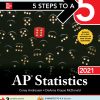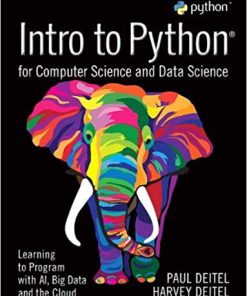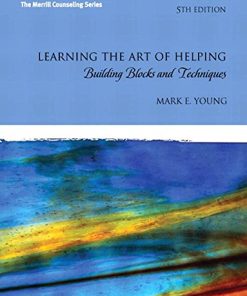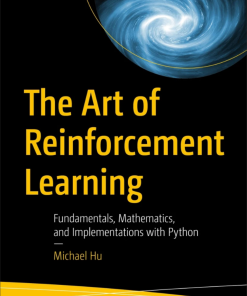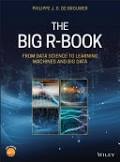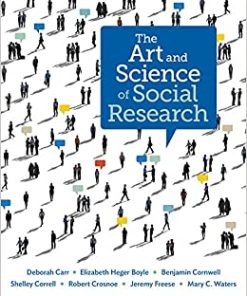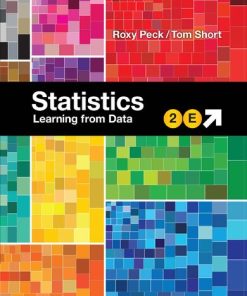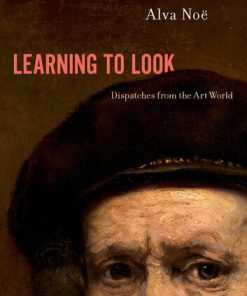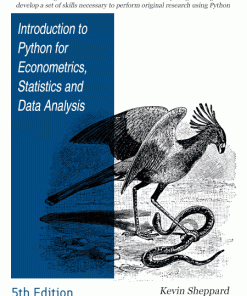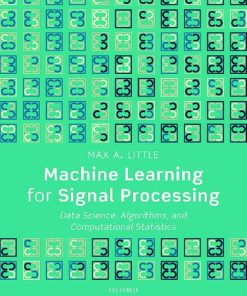(EBook PDF) Statistics The Art and Science of Learning from Data 5th Edition by Alan Agresti, Christine Franklin, Bernhard Klingenberg 1292444762 978-1292444765 full chapters
$50.00 Original price was: $50.00.$25.00Current price is: $25.00.
Statistics: The Art and Science of Learning from Data 5th Edition by Alan Agresti, Christine Franklin, Bernhard Klingenberg – Ebook PDF Instant Download/DeliveryISBN: 1292444762, 978-1292444765
Full download Statistics: The Art and Science of Learning from Data 5th Edition after payment
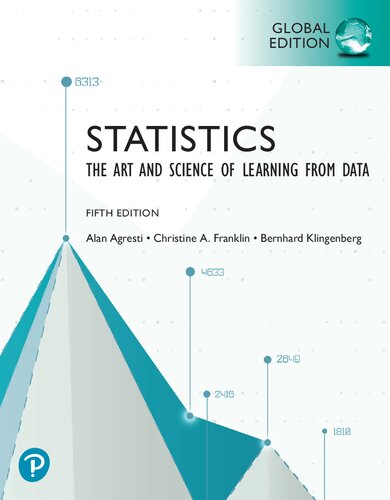
Product details:
ISBN-10 : 1292444762
ISBN-13 : 978-1292444765
Author: Alan Agresti, Christine Franklin, Bernhard Klingenberg
Statistics: The Art and Science of Learning From Data, 5th Edition helps you understand what statistics is all about and learn the right questions to ask when analyzing data, instead of just memorizing procedures. It makes accessible the ideas that have turned statistics into a central science of modern life, without compromising essential material. Students often find this book enjoyable to read and stay engaged with the wide variety of real-world data in the examples and exercises. Based on the authors’ belief that it’s important for you to learn and analyze both quantitative and categorial data, this text pays greater attention to the analysis of proportions than many other introductory statistics texts.
Statistics: The Art and Science of Learning from Data 5th Table of contents:
I: GATHERING AND EXPLORING DATA
- Statistics: The Art and Science of Learning From Data
- 1.1 Using Data to Answer Statistical Questions
- 1.2 Sample Versus Population
- 1.3 Organizing Data, Statistical Software, and the New Field of Data Science
- Chapter Summary
- Chapter Exercises
- Exploring Data With Graphs and Numerical Summaries
- 2.1 Different Types of Data
- 2.2 Graphical Summaries of Data
- 2.3 Measuring the Center of Quantitative Data
- 2.4 Measuring the Variability of Quantitative Data
- 2.5 Using Measures of Position to Describe Variability
- 2.6 Linear Transformations and Standardizing
- 2.7 Recognizing and Avoiding Misuses of Graphical Summaries
- Chapter Summary
- Chapter Exercises
- Exploring Relationships Between Two Variables
- 3.1 The Association Between Two Categorical Variables
- 3.2 The Relationship Between Two Quantitative Variables
- 3.3 Linear Regression: Predicting the Outcome of a Variable
- 3.4 Cautions in Analyzing Associations
- Chapter Summary
- Chapter Exercises
- Gathering Data
- 4.1 Experimental and Observational Studies
- 4.2 Good and Poor Ways to Sample
- 4.3 Good and Poor Ways to Experiment
- 4.4 Other Ways to Conduct Experimental and Nonexperimental Studies
- Chapter Summary
- Chapter Exercises
II: PROBABILITY, PROBABILITY DISTRIBUTIONS, AND SAMPLING DISTRIBUTIONS
- Probability in Our Daily Lives
- 5.1 How Probability Quantifies Randomness
- 5.2 Finding Probabilities
- 5.3 Conditional Probability
- 5.4 Applying the Probability Rules
- Chapter Summary
- Chapter Exercises
- Random Variables and Probability Distributions
- 6.1 Summarizing Possible Outcomes and Their Probabilities
- 6.2 Probabilities for Bell-Shaped Distributions
- 6.3 Probabilities When Each Observation Has Two Possible Outcomes
- Chapter Summary
- Chapter Exercises
- Sampling Distributions
- 7.1 How Sample Proportions Vary Around the Population Proportion
- 7.2 How Sample Means Vary Around the Population Mean
- 7.3 Using the Bootstrap to Find Sampling Distributions
- Chapter Summary
- Chapter Exercises
III: INFERENTIAL STATISTICS
- Statistical Inference: Confidence Intervals
- 8.1 Point and Interval Estimates of Population Parameters
- 8.2 Confidence Interval for a Population Proportion
- 8.3 Confidence Interval for a Population Mean
- 8.4 Bootstrap Confidence Intervals
- Chapter Summary
- Chapter Exercises
- Statistical Inference: Significance Tests About Hypotheses
- 9.1 Steps for Performing a Significance Test
- 9.2 Significance Tests About Proportions
- 9.3 Significance Tests About a Mean
- 9.4 Decisions and Types of Errors in Significance Tests
- 9.5 Limitations of Significance Tests
- 9.6 The Likelihood of a Type II Error
- Chapter Summary
- Chapter Exercises
- Comparing Two Groups
- 10.1 Categorical Response: Comparing Two Proportions
- 10.2 Quantitative Response: Comparing Two Means
- 10.3 Comparing Two Groups with Bootstrap or Permutation Resampling
- 10.4 Analyzing Dependent Samples
- 10.5 Adjusting for the Effects of Other Variables
- Chapter Summary
- Chapter Exercises
IV: ANALYZING ASSOCIATION AND EXTENDED STATISTICAL METHODS
- Analyzing the Association Between Categorical Variables
- 11.1 Independence and Dependence (Association)
- 11.2 Testing Categorical Variables for Independence
- 11.3 Determining the Strength of the Association
- 11.4 Using Residuals to Reveal the Pattern of Association
- 11.5 Fisher’s Exact and Permutation Tests
- Chapter Summary
- Chapter Exercises
- Analyzing the Association Between Quantitative Variables: Regression Analysis
- 12.1 Modeling How Two Variables Are Related
- 12.2 Inference About Model Parameters and the Association
- 12.3 Describing the Strength of Association
- 12.4 How the Data Vary Around the Regression Line
- 12.5 Exponential Regression: A Model for Nonlinearity
- Chapter Summary
- Chapter Exercises
- Multiple Regression
- 13.1 Using Several Variables to Predict a Response
- 13.2 Extending the Correlation and R2 for Multiple Regression
- 13.3 Using Multiple Regression to Make Inferences
- 13.4 Checking a Regression Model Using Residual Plots
- 13.5 Regression and Categorical Predictors
- 13.6 Modeling a Categorical Response
- Chapter Summary
- Chapter Exercises
- Comparing Groups: Analysis of Variance Methods
- 14.1 One-Way ANOVA: Comparing Several Means
- 14.2 Estimating Differences in Groups for a Single Factor
- 14.3 Two-Way ANOVA
- Chapter Summary
- Chapter Exercises
- Nonparametric Statistics
- 15.1 Compare Two Groups by Ranking
- 15.2 Nonparametric Methods for Several Groups and for Matched Pairs
- Chapter Summary
- Chapter Exercises
People also search for Statistics: The Art and Science of Learning from Data 5th:
statistics the art and science of learning from data agresti
is statistics important for data science
what is the science of statistics
statistics for data science notes
where to learn statistics for data science
Tags:
Statistics,The Art,Science,Learning from Data,Alan Agresti,Christine Franklin,Bernhard Klingenberg
You may also like…
Uncategorized
Uncategorized
Computers - Artificial Intelligence (AI)
Uncategorized
Mathematics
Arts - History & Criticism
Learning to Look. Dispatches from the Art World 1st Edition Alva Noë
Computers - Programming
Introduction to Python for Econometrics, Statistics and Data Analysis 5th Edition Kevin Sheppard
Computers - Computer Science


